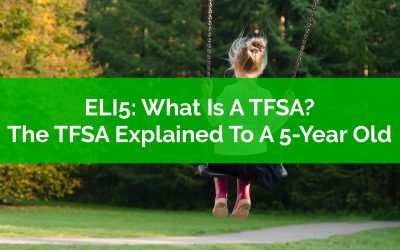Thank you for joining the waitlist!
You’re on the list for early access!
We will contact you via email when we’re ready for you to start your self-directed financial plan. In the mean time here is a quick preview…
Check out our latest blog posts…
What Are The Different Types Of Life Insurance?
Risk management is an important consideration in any financial plan. There are many risks that must be managed to have a solid financial plan. For example there is investment risk, inflation rate risk, longevity risk… and of course the risk of an unexpected death.
To help reduce the risk of an unexpected death we can use life insurance, but there are many types of life insurance to choose from, so what type of life insurance is right for your situation?
Although it can be difficult to think about, reducing the risk of an unexpected death is very important to consider when creating a long-term plan. This is especially important in certain circumstances. For example, life insurance is extremely important when there are dependents who need to be provided for in the event of an unexpected death, or when there is a large tax liability that could be triggered by an unexpected death.
In this post we’ll explore the different types of life insurance that are available and some of their important features, but first it’s important to understand the purpose behind life insurance.
ELI5: What Is A TFSA? The TFSA Explained To A 5-Year Old
The Tax-Free-Savings-Account (TFSA) is a great way to save and invest for the future. In our opinion, it’s the best tax advantaged account in Canada, and probably the first tax advantaged account most people should use (versus an RRSP or RESP). But with all the rules it can be very misunderstood.
To get the most out of your TFSA you have to have a good idea of how it works, what the benefits are, and what the limitations are.
The Canadian government introduced TFSAs in 2009 as an incentive to help any Canadians 18 years or older save more money. Although called a “Tax Free Savings Account”, the TFSA is more than an average savings account.
Even though the TFSA has been around for 10+ years, there is still a lot of confusion about how TFSAs work and what the benefits are.
In this post we’ll do an ELI5 for the TFSA (ELI5 = explain it like i’m 5-years old) and share some of the important considerations when using a TFSA.
Should You Take The Commuted Value Of A Pension?
Defined benefit pensions are often an enormous advantage when it comes to retirement planning but there are also some very complex decisions that need to be made. One of those decisions could be whether or not you should take the commuted value of a pension.
The commuted value represents the lump-sum value of a defined benefit pension… it is the amount that the actuary feels your pension is worth in today’s dollars… and it can be very very large.
A reasonable defined benefit pension could have a commuted value worth $250,000+, or $500,000+, or even $1,000,000+
Seeing all those zeros can be very enticing. This can cause many people to consider taking the commuted value rather than the lifetime retirement benefit offered by a defined benefit pension.
But should you take the commuted value of a pension? There are often many things to consider when deciding to take the commuted value of a pension and the size of the commuted value itself is one just one piece of the puzzle.
Let’s take a look at a few of the factors that you may want to consider, but first, what is a commuted value exactly?



